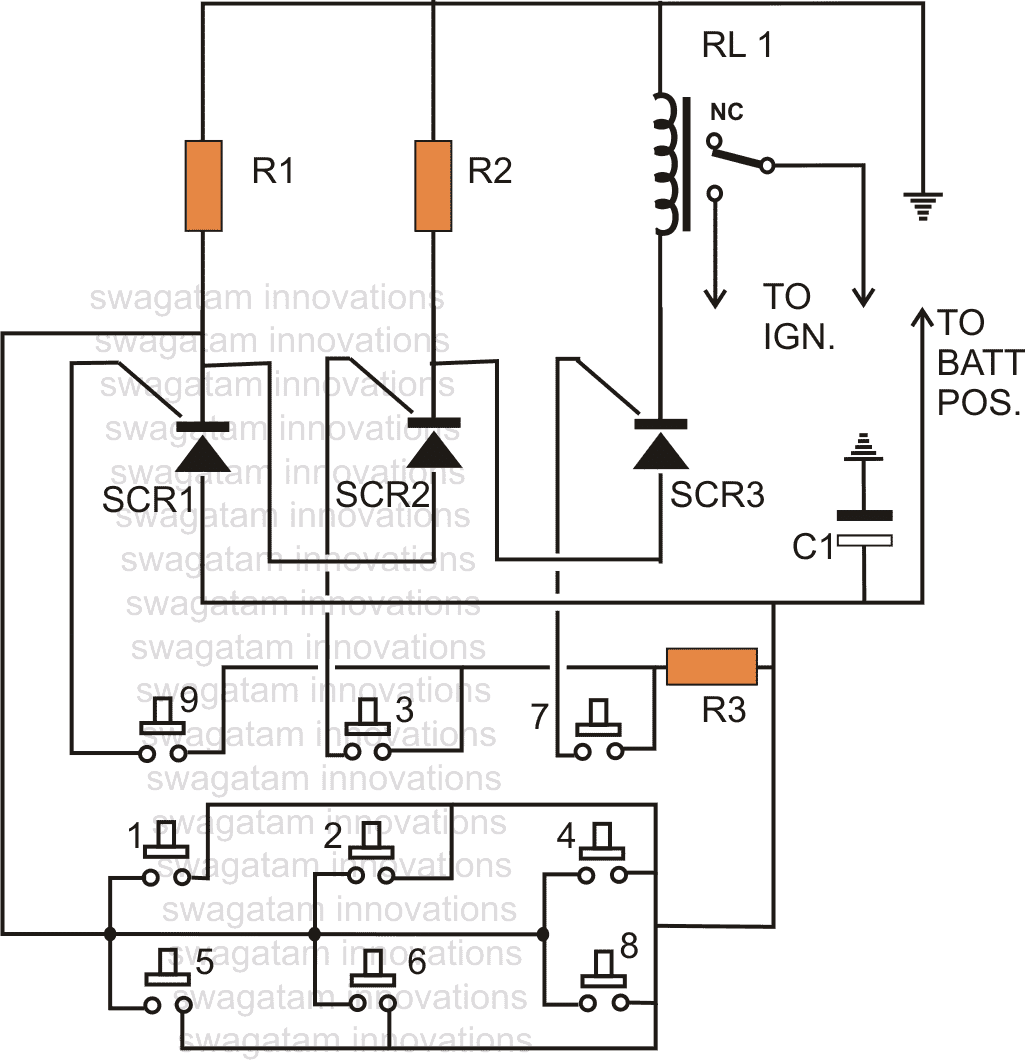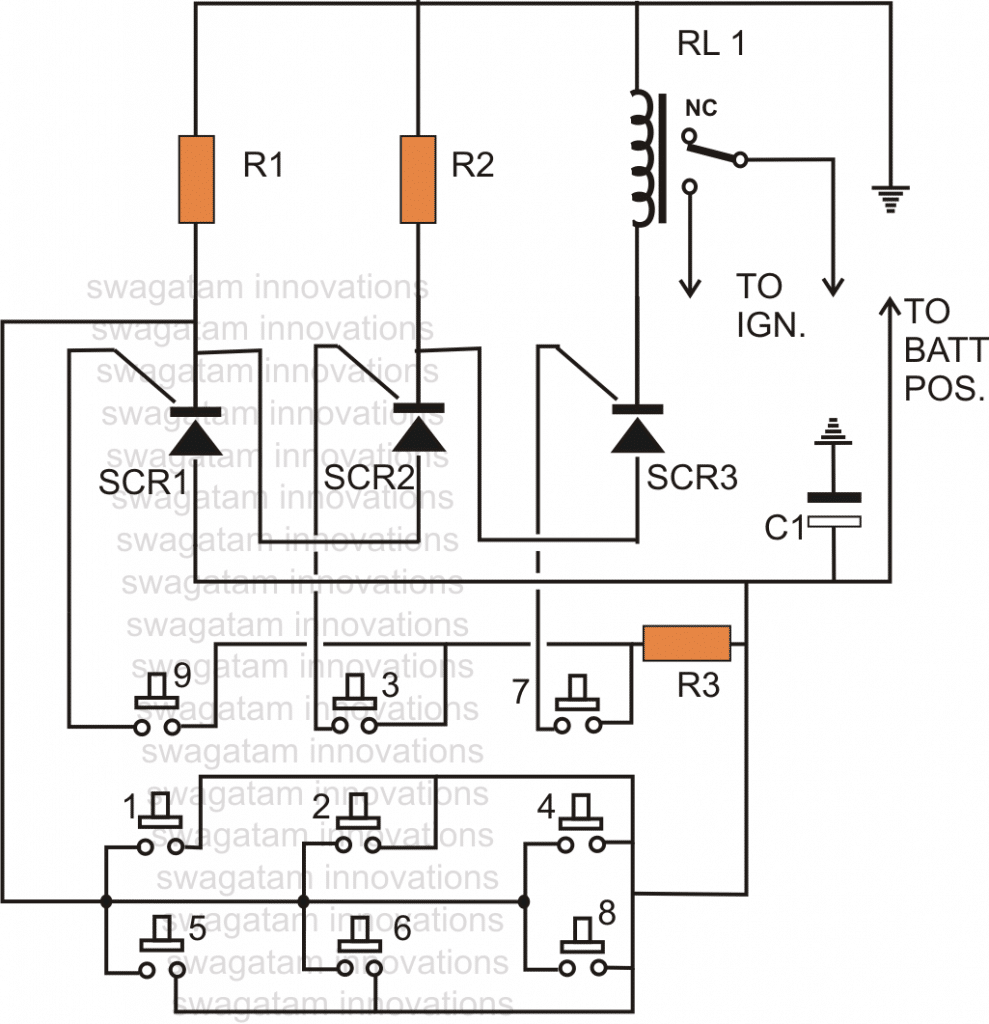This extremely simple code lock switch circuit can be used for locking a vehicle’s ignition by typing a hidden code over the given micro switch keypads.
So now you can use this simple code lock ignition circuit for probably securing your car from a possible theft. Alternatively the circuit may be used for any application requiring security or safeguarding from external intrusions and thefts.
The Use of SCRs in the Design
SCRs are well known to all of us and we are quite familiar to the many salient features of this important active electronic component. One important feature of this device is its latching ability when operated with a DC.
Precisely when an SCR is triggered with a DC load across its anode and cathode, the device switches ON, latches and sustains the switched ON position permanently until power is switched OFF.
For the newcomers, the device SCR is explained briefly with the following points:
Called Silicon Controlled Rectifier, an SCR basically consists of three leads, the extreme right lead is the “gate”, the center one is the cathode and the extreme right lead is termed as the anode.
The cathode needs to be connected to the ground or the negative line of the circuit.
The anode is the lead which is connected to the supply voltage (either a DC or an AC) via the load which is intended to be switched by the device.
The gate is the triggering input which is triggered with a DC, for energizing the load connected at the anode of the device.
A gate trigger instantly switches the SCR, connecting the load across the supply terminals through the SCR body.
With AC as the supply across the load, the SCR remains switched ON as long as the gate is triggered with a DC.
However when a DC is used for energizing the load, the SCR becomes a single shot switching device, because it latches and keeps the load switched ON even when the gate trigger is removed.
The above feature has been effectively exploited in the present code lock circuit design, let’s learn the circuit functioning with the following instructions:

The figure shows a simple arrangement where, three SCRs are wired in conjunction with an array of ten micro switches.
Selecting the Code Numbers
As per the selected code, the particular switches are integrated with the gates of the SCRs in a given sequence as shown in the diagram.
Here, the elected code is 9, 3, 7 and these buttons are connected with the relevant SCR gates.
The other terminals of these buttons are made into a single common terminal, which is connected with the positive supply of the circuit.
How the Code Lock Works
When the switch 9 is pressed, the gate of the first SCR is triggered; it latches via R1 which is connected as the load for SCR1. This SCR also conecys the anode of SCR 2 with the negative and puts it on a standby condition.
Pressing button 3 triggers the gate of SCR2 which instantly latches with the load R2 and via the path provided by SCR1. This action connects the anode of SCR3 with the negative supply and in turn clamps SCR3 into an alert position.
Finally when button no. 7 is pressed, SCR 3 latches via the path provided by the SCR2 and in the course switches ON the relay which forms the load of SCR3.
The contacts of the relay which is possibly connected with the ignition of the vehicle become active so that the vehicle can be now started with the ignition key.
The rest of the switches other than the ones which are selected as the codes may be rigged with the positive supply, so that when an intruder tries his luck by randomly pressing the codes, only succeeds in breaking a possible combination every time it accidentally switches any of the remaining buttons.
Parts List
Parts required for making this simple code lock switch
- R1, R2, R3 = 1K,
- R3 = 470 Ohms,
- C1 = 100uF/25V,
- SCR1,2,3 = BT169,
- RL1 = relay 12 volts, 400 Ohms, SPDT
- Keyboard = 10nos. micro switch bank
